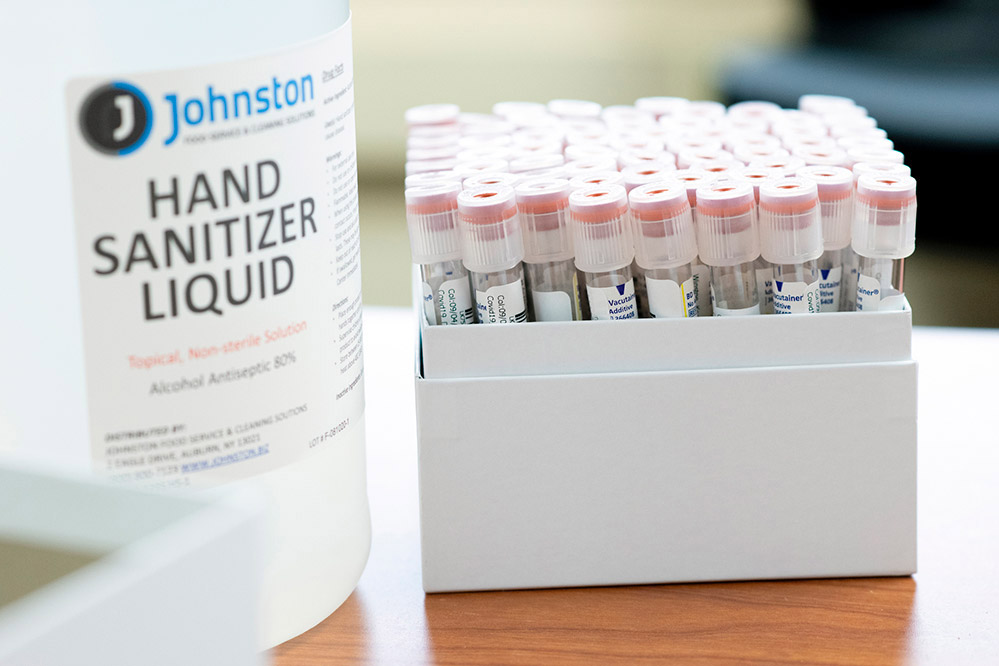Lessons learned fighting the coronavirus this fall will prepare RIT for new challenges in the spring
A. Sue Weisler
RIT administered 12,147 coronavirus tests while classes were in session this fall.
RIT successfully completed all 13 weeks of in-person instruction this fall without having to suspend or cancel classes due to coronavirus outbreaks. Despite having a large, active campus with students from many countries and all 50 states, RIT had a relatively low rate of infection and avoided major outbreaks.
From Aug. 19 to Nov. 24 (the final day of in-person classes) on the main RIT campus:
- Ninety students tested positive for coronavirus out of a student population of 16,208.
- Twenty employees tested positive out of 3,605.
- The rates of infection for both student and employee populations for were just over .5 percent for the semester.
- RIT never filled more than 46 percent of the beds it had available for quarantine and isolation.
RIT officials said this achievement is partly due to putting the right preventative measures in place, but even more because students, faculty, and staff took the virus seriously and were fully committed to playing their part.
“As much planning as we did, without the adherence to the rules by the students, we would not be where we are today,” said Dr. Wendy Gelbard, RIT associate vice president for Wellness. “The students for the most part really took this seriously. I’m hoping that on their break they will have just the right mix of fun and healthy anxiety so that they come back ready to treat this second semester in a similar manner.”
Gelbard said the spring semester will present different challenges because the virus is likely to be much more prevalent across the country in January than it was in August and because the colder weather means people will spend more time indoors. But she says the university knows much more about how the virus spreads now and will use lessons learned from the fall semester to prepare for the spring.
One of the biggest takeaways was that the precautions put in classrooms—including requiring masks, spacing people apart, and enhanced cleaning procedures—were effective in preventing the spread.
Gelbard said RIT did not find any instances this semester when coronavirus was transmitted via the classroom; it was typically spread through small, informal gatherings. She said much of the focus for the spring will be educating the RIT community about how to safely congregate outside the classroom.
Perhaps the biggest change in store for the spring will be on the testing front because RIT is gaining capabilities to perform in-house saliva-based tests. RIT administered 12,147 tests while classes were in session this fall, but Gelbard expects that the number will more than double in the spring.
Before classes adjourned, RIT offered pre-departure COVID-19 testing to students. More than 3,000 students took these tests, but those tests yielded just 15 positive cases at a time when the prevalence in the region and nationwide was rapidly increasing.
“We were very afraid of what we were going to find knowing what the community spread looked like at the time in Monroe County, but we had very few positives result from that,” said Enid Cardinal, senior advisor to the president for strategic planning and sustainability. “That is really a testament to students and the RIT community as a whole adhering to the adjustments we put in place in response to what we were seeing.”
However, both Cardinal and Gelbard emphasized the need to remain vigilant in the spring semester.
“We can’t be apathetic this next semester because we made it through the first semester,” said Cardinal. “We can’t assume we’ll do as well in the spring. We were successful because everyone worked really hard and everyone adhered to the rules. In the spring semester this will be even more important.”















